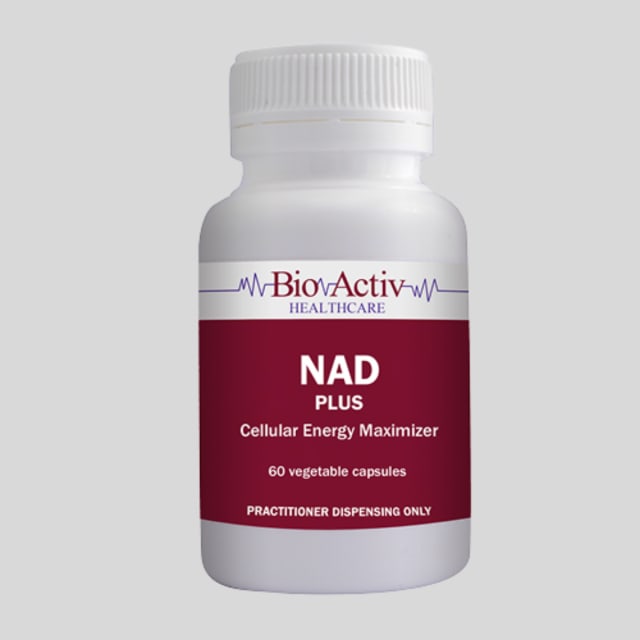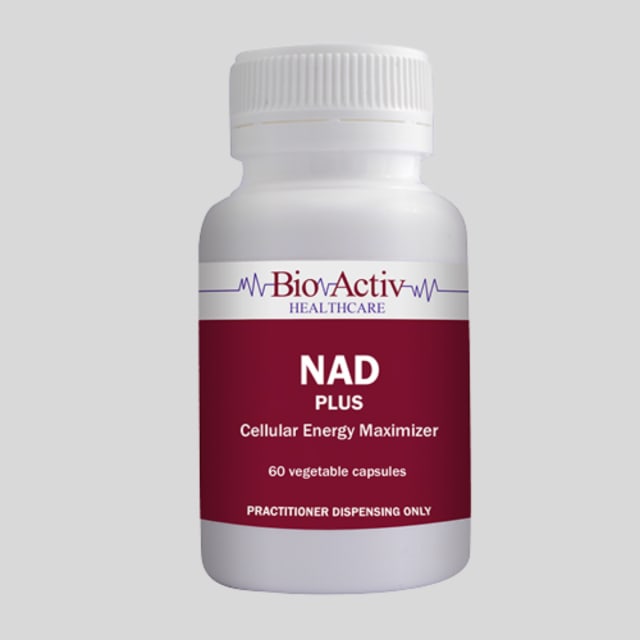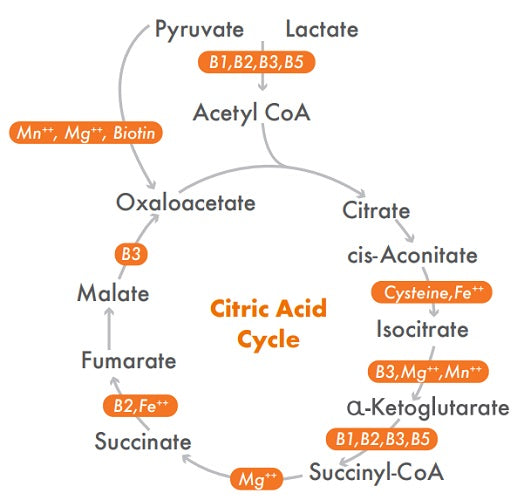To help us enhance our site, we use cookies for analytics; your data is never sold.



BioActiv HealthCare NAD Plus
Cellular Energy Maximizer
BioActiv HealthCare NAD Plus
Cellular Energy Maximizer
BioActiv HealthCare NAD Plus - QLD ONLY
BioActiv HealthCare NAD Plus 10% off RRP
Size: 60 VegCaps
BioActiv HealthCare NAD Plus Summary:
- Contains Activated B3 (NAD+)
- BioActiv HealthCare NAD Plus supports cellular Adenosine triphosphate (ATP) production and may help assist cells that have degenerated due to ageing, stress or oxidative damage.
- BioActiv HealthCare NAD Plus is of the highest quality and purity.
- Vitamin B3 is essential to all living cells, and its activated form, NAD+ (Nicotinamide Adenine Dinucleotide), plays a key role in cellular energetic processes, fatty acid synthesis, signal transduction and regulation of normal gene expression.
BioActiv HealthCare NAD Plus is Free from Gluten, Dairy and Excipients.
Vegan Friendly.
BioActiv HealthCare NAD Plus AUST L
Dose
1 capsule twice daily before meals or as directed by your health care professional
Ingredients
| Per capsule: | |
| NAD (Nicotinamide Adenine Dinucleotide) (NAD+) | 5mg |
| Citrulline Malate | 350mg |
| Nicotinamide Riboside (NAD) | 150mg |
| TransResveratrol | 50mg |
| Nicotinic Acid | 15mg |
Free From
Free from Gluten, Dairy and Excipients.
Vegan Friendly.
Storage
Store in a cool dry place below 25°C.
Cautions
Keep out of reach of children.
Do not use if tamper evident seal is broken or missing.
Ensure lid tightly closed after use.
Contains silica gel sachet, do not swallow.
Interactions
Individuals on the following medications, Monoamine Oxidase Inhibitors, Serotonin-Norepinephrine Reuptake Inhibitors and Tricylic antidepressants, NAD supplementation may give rise to symptoms of dopamine overdosing.
Technical Information
There is mounting scientific interest in the role that Vitamin B3 metabolism plays in health and disease. Activated B3, or Nicotinamide Adenine Dinucleotide (NAD+), regulates a number of enzymatic energetic reactions and is also involved in biological mechanisms associated with lifespan, neurological health and cellular function.
Helps to Support Mitochondrial Function and Cellular Energy Production
Activated B3 (NAD+) has a primary role in cellular metabolism and is associated with signaling reactions, both within and outside cells, involved in normal gene expression, calcium mobilisation, cell death and ageing. NAD+ also plays a critical role in many energetic processes, particularly in glycolysis, the Citric Acid Cycle and the Electron Transport Chain (ETC). Without NAD+, the cell would not be able to produce sufficient energy to maintain normal function (Figures 1 & 2).
NAD+ production occurs via two major pathways in both prokaryotic and eukaryotic systems. NAD+ can be synthesised from Tryptophan and can be regenerated by recycling degraded NAD+ products, such as Nicotinamide. In its reduced form (NADH), NAD+ may be viewed as an energy substitute, providing the cell with additional energy. Many health conditions are associated with a decline in ETC activity, often attributed to decreased mitochondrial substrates. Due to the ability of NADH to increase cellular Adenosine triphosphate (ATP) production via mitochondrial oxidative phosphorylation, its supplementation could help support energy pathways and provide relief of symptoms as a valuable adjunctive therapy in unexplained persistent chronic fatigue.
Figure 1. NADH in the Electron Transport Chain

Figure 2. The Citric Acid Cycle

Supports Neurological Health
Certain chronic and progressive clinical presentations are characterised by significant decreases of NADH and ATP activity due to extensive oxidative damage and decreased availability of mitochondrial substrates. Recent results established protective roles for NAD+, with suggested mechanisms involving inducing immune homeostasis and restoring tissue integrity via remyelination and neuroregeneration.
Recent research demonstrated, for the first time, the mechanisms of how the administration of NADPH, a reduced form of NAD+ with an added phosphate molecule used in anabolic reactions, significantly protected neurons from injury. It also significantly reduced long-term mortality and improved recovery of neurological functions. This was achieved by increasing the flow of the pentose phosphate pathway with NADPH, to support the production of glutathione in its reduced form and reduce oxidative stress.
Online ordering is available 24/7.
Your order may ship in multiple packages to ensure they reach you as soon as possible.
If any of your products are on backorder and you are within Australia, these items will ship separately as soon as they become available at no additional cost. For international orders, your order will be sent in one package when all stock is available.
The stock availability dates are provided by our suppliers, and we endeavour to keep this information as up to date as possible on the product page.
| Within Australia | |
| Orders over $150 | $10 Express * |
| Orders under $150 | $15 Express * |
All values are Australian dollars, incl. GST.
* Deliveries to PO Boxes will be shipped standard, 2-5 days transit. Cold goods cannot be shipped to PO Boxes.
For more information, including estimated transit times and international pricing, see our Shipping page.
The products listed below are suggestions that may be used as a substitute if the product you are looking for is unavailable.
- BioActiv HealthCare NMN - NMN (Nicotinamide Mono Nucleotide) 6-800mg per scoop
- Designs For Health NR Supreme - NR (Nicotinamide Riboside Chloride) 300mg per capsule
- RN Labs Nicotinamide Riboside NR - NR (Nicotinamide Riboside Chloride) 300mg per capsule
Note:
In the body, NR (Nicotinamide Riboside) converts to NMN (Nicotinamide Mono Nucleotide) which is then converted in the cell to Nicotinamide NAD (Adenine Dinucleotide).
Can't see an appropriate product, or have any other questions?
You can contact HealthMasters for assistance HERE
